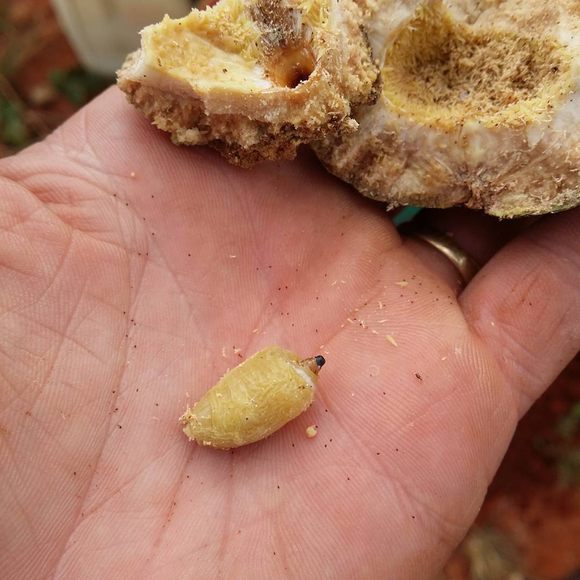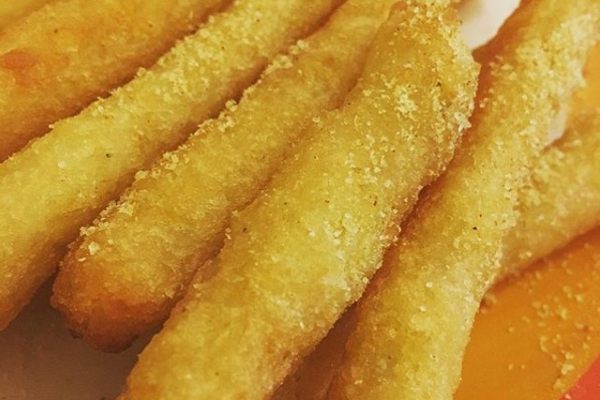The origins of bush coconuts are a little gruesome. A grublike coccid insect, usually Cystococcus pomiformis, settles on the branch of a desert bloodwood tree. She—and it’s always a she—irritates the tree until it defends itself by sprouting a knobby tumor. This gall grows around the grub, who spends the rest of her life there, drinking tree sap and even mating with male grubs (via a tiny air hole) from inside her fortress.
Together, the gall and the worm form the bush coconut, sometimes called the less appetizing “bloodwood gall.” Lumpy and small, it doesn’t look much like a coconut. The name instead comes from the gall’s coconut-flavored flesh. Foragers typically also eat the worm, which has a sweet, juicy taste. Falling into the category of native food sources known as “bush tucker,” the bush coconut has long been a source of nutrition for aboriginal Australians in the northern savanna woodlands.
Until 2015, scientists thought that only two types of Cystococcus insects made bush coconuts. Then they found Cystococcus campanidorsalis in the middle of Brisbane. The newly discovered grub is busy making bush coconuts for Brisbanites willing to scan the trees for a snack.
Where to Try It
-
Alice Springs Desert Park
871 Larapinta Dr, Alice Springs , 0871, AustraliaAt this arid desert park, you can see typical Central Australian flora and fauna.
Written By
 Anne Ewbank
Anne Ewbank
Sources
- slowfoodaustralia.com.au/arkoftaste/bush-coconut/
- www.adventuretours.com.au/australia-outback-yarns/can-i-eat-that-a-rough-guide-to-aussie-bush-tucker/
- www.alicespringsdesertpark.com.au/kids/nature/inverte/gall.shtml
- www.sciencedaily.com/releases/2015/07/150727100026.htm
- www.uq.edu.au/news/article/2015/07/hiding-plain-sight-%E2%80%93-new-species-discovered-south-east-queensland
















